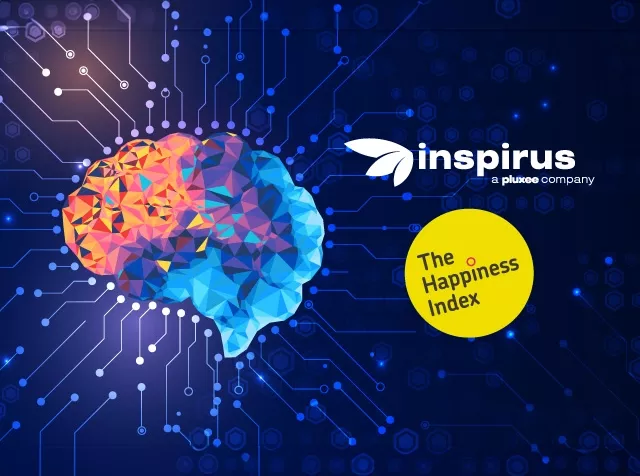
Unveiling the Most Valuable Types of Employee Feedback
September 27, 2023
By Aspen Christopher
Feedback and engagement in the workplace go hand-in-hand. When delivered tactfully, the right types of employee feedback contribute to the growth of both an organization and the people who work there. Like any relationship, honest and trust-driven communication fuels success. In the case of workplace relationships, that communication hinges on the ability to freely share and receive feedback.
Feedback and engagement in the workplace go hand-in-hand. When delivered tactfully, the right types of employee feedback contribute to the growth of both an organization and the people who work there.
Like any relationship, honest and trust-driven communication fuels success. In the case of workplace relationships, that communication hinges on the ability to freely share and receive feedback.
Employees who feel their voice is heard are nearly five times more likely to perform their best work. That’s why employee feedback surveys can be such a powerful tool to enhance organizational success.
Likewise, research shows just how highly employees value receiving regular feedback. In fact, 65% of employees say they want more feedback from their managers and peers. Performance reviews are one way to start the conversation, but they are not the only way.
Here are some of the most valuable types of feedback that provide actionable insight for employees and leadership alike.
The Landscape of Employee Feedback
Employee feedback has undergone profound transformation in recent years, from the conventional practices of annual surveys and isolated performance reviews to a multifaceted, dynamic process.
Today employee feedback is tied to specific goals and key performance indicators, and is often accompanied by reward and recognition programs. Technology and digital tools make capturing, monitoring and measuring employee sentiment easy with real-time data that drives action.
Plus, feedback now is more often tailored to the individual, as opposed to a one-size-fits-all approach. Employees have the opportunity to share their thoughts in the ways that are most convenient to them – like through a digital survey available 24/7 – and receive feedback that suits their preferences and goals.

As organizations deal with new challenges in retention, burnout, and digital workforces, it is essential to measure both happiness and engagement for cultural and business success, as well as the overall health of employees.
Types of Employee Feedback
1. Performance Feedback: The Core Driver
This is what people most often think of when it comes to employee feedback: an assessment of job-related tasks and achievements. It provides a structured, objective evaluation of work, offering insights into both areas of strength and areas that need improvement.
For instance, a quarterly performance review may highlight an employee's exceptional project management skills while identifying opportunities for improvement in time management. A shout-out during a team meeting or supportive feedback for colleagues after a presentation can go a long way in creating a culture of recognition and constructive input.
Performance feedback is most often tied to specific outcomes or key performance indicators that are aligned with the company’s goals or mission. It’s also one of the easiest forms of feedback to tie to a recognition program, rewarding employees with tangible gifts for hitting targets or celebrating milestone moments.
2. Developmental Feedback: Nurturing Growth
Development feedback can be a catalyst for growth and skill development because it focuses specifically on fostering an individual’s potential with actionable suggestions. It often comes from leadership, but peer-to-peer developmental feedback can also be encouraged.
Rather than just identifying an area that needs improvement, this type of feedback leads to specific next steps whether that’s further training, different tools or more mentorship.
Benefits of development feedback include:
- Enhanced employee skills
- Improved retention rates
- A culture of continuous improvement
- Actionable peer feedback
By prioritizing developmental feedback, organizations are investing in their most valuable asset – their employees.
3. Constructive Criticism: Building Resilience
Feedback can’t always be positive. Sometimes, a goal wasn’t met or a piece of work wasn’t up to a standard of quality.
Constructive criticism doesn’t have to be negative, though. Wielded correctly, it’s a formidable tool for personal or professional development, helping individuals improve and ultimately build resilience.
When providing constructive input to peers or direct reports, make sure to:
- Pinpoint specific areas for improvement: Don’t be vague. Provide clear, actionable insight into what needs to be improved.
- Frame the criticism positively: Deliver your message in a way that emphasizes growth and improvement rather than shortcomings. For example, say “Your report has great potential – some additional proofreading and attention to detail will make it even more impactful,” instead of “Your report is filled with errors.”
- Follow up: When you see an improvement based on the feedback, say so! Recognition, especially after criticism, can be doubly powerful.
4. Positive Recognition: Boosting Morale
Employee recognition is a morale-boosting force that improves company culture, increases job satisfaction and drives productivity, among other benefits.
Everyone needs to feel valued and appreciated. But that doesn’t always happen by accident. Having a formalized recognition program at work can help make sure nothing falls through the gaps and no one is overlooked.
As you build a culture of appreciation and peer recognition in the workplace, make sure to tick these boxes:
- What opportunities are there for regular, timely recognition throughout the day?
- Are both managers, leaders and peers empowered to call out specific positive actions or results?
- Has the recognition process been audited to ensure inclusivity and fairness?
- Is peer recognition incorporated into performance reviews?
- Do you offer tangible rewards for a job well done, like gifts or experiences?
- Are you leveraging employee engagement and recognition technology to facilitate the process?
From casual shout-outs during a team meeting from a colleague or manager to a more structured program with points-based rewards shopping for a service milestone, recognition is a fundamental part of positive employee feedback.
5. 360-Degree Feedback: Holistic Insights
Having a complete 360-degree view requires gathering feedback from all angles and stakeholders.
In terms of an individual employee’s performance, that means going beyond a traditional top-down evolution from supervisors to incorporate insights from various other sources, including colleagues, supervisors and reports.
That also means soliciting insights from employees about how the organization is managed and how they are feeling in their roles.
One key challenge with 360-degree feedback is ensuring any input is collected constructively and anonymously to encourage honesty and openness. Trust is a critical component of this comprehensive approach: those sharing their thoughts must know that their feedback will be used for development rather than retribution, especially when it’s about another team member.
6. Managerial Feedback: Guiding Success
Managerial feedback plays a pivotal role in shaping the professional journey of an employee, guiding them toward success and fostering growth at the organization.
The most important points to keep in mind are:
- Consistency: Regular and ongoing feedback creates a loop of continuous improvement and is more impactful than one-off moments.
- Timeliness: Timely feedback and recognition are important to allow employees to address issues and capitalize on opportunities.
- Actionability: Feedback should provide clear guidance and the next steps to be actionable.
At the end of the day, employee feedback of any type isn’t just an evaluation of performance. It’s a tool that empowers individuals and organizations alike to better understand their strengths, focus on measurable areas for improvement and align their efforts.
That’s why it’s so critical to not only collect input from leadership, managers and peers, but also from employees themselves. Want to learn more about how employee feedback surveys can help? Check out Connects Plus.




